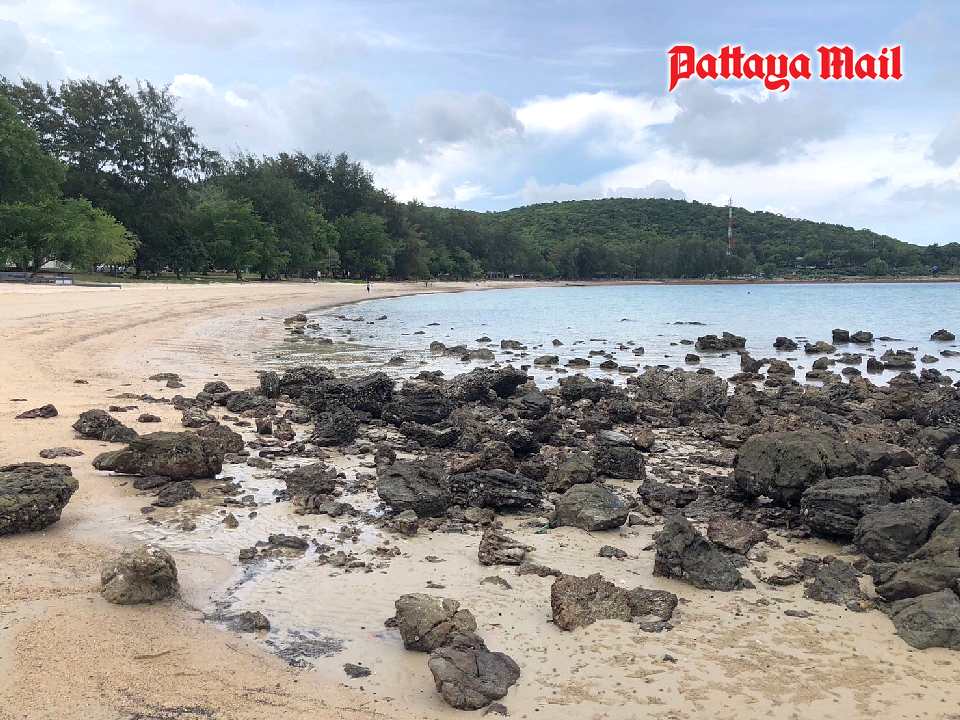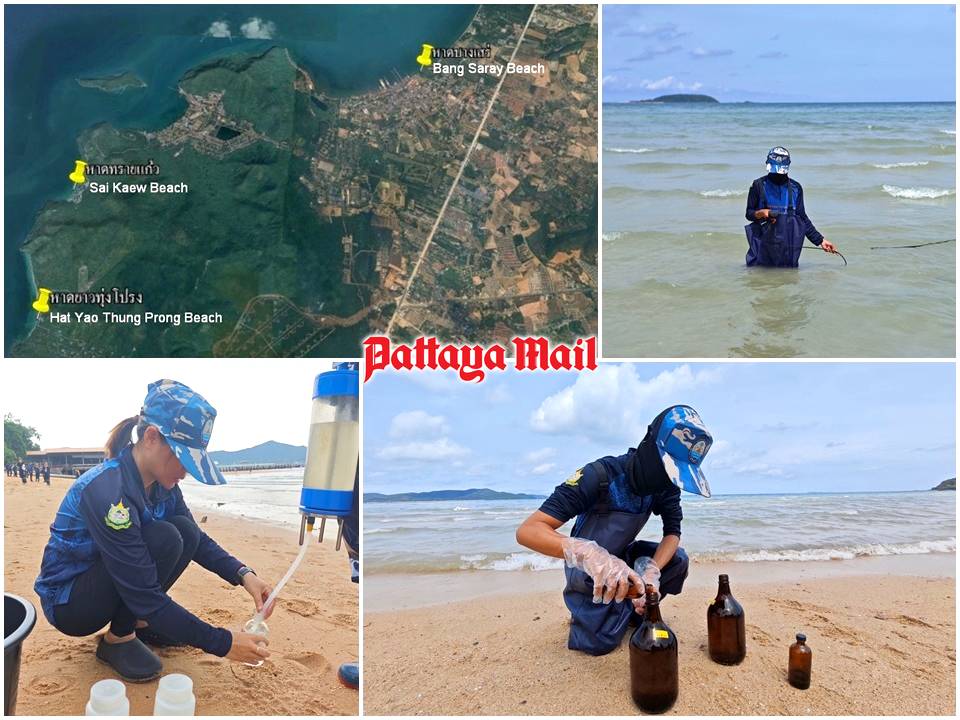
SATTAHIP, Thailand – As of August 23, preliminary assessments by the Eastern Gulf of Thailand Marine and Coastal Resources Research Center reveal that three Sattahip beaches have been significantly impacted by an oil slick off the coast.
Reports indicate that Hat Yao Thung Prong Beach has been contaminated by tar balls over a 200-meter stretch. Bang Saray Beach has been affected over a smaller area of 50 meters, while Sai Kaew Beach has experienced the most extensive impact, with oil stains and tar balls detected along a 450-meter stretch.
Initial water quality tests show pH levels between 8.00 and 8.02, water temperatures ranging from 30.9 to 31.7°C, salinity levels from 28.0 to 30.5 parts per thousand (ppt), and dissolved oxygen levels of 5.3 to 5.7 milligrams per litre. These parameters are within the acceptable range for recreational seawater standards (Category 4). Water samples are being analysed for petroleum hydrocarbons to assess the full extent of the contamination.

Authorities are taking proactive steps to prevent further spills, including ensuring the proper maintenance of vessels and equipment. The response involves collaboration with local government bodies, educational institutions, and community groups to enhance reporting mechanisms for illegal dumping and oil contamination. Cleanup operations are ongoing to address the environmental impact and restore the affected beaches.








